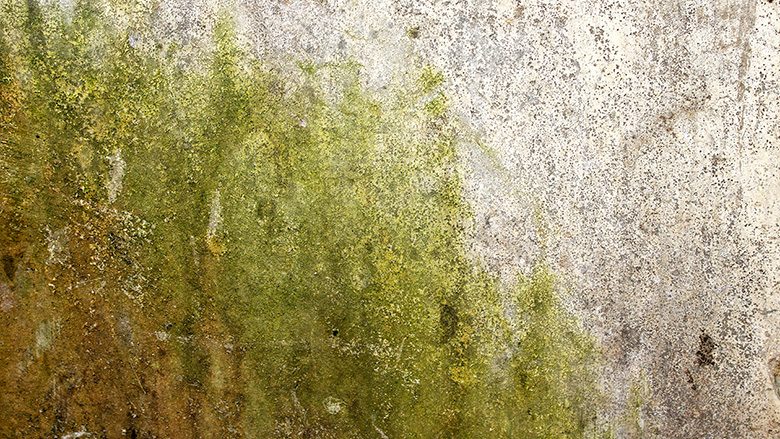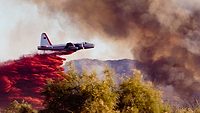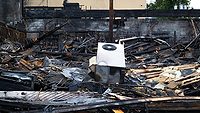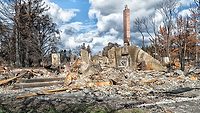Environmental Professionals: The Key to Restoring Fire-Damaged Properties and Mitigating Hazards

Photo: SolStock / E+ via Getty Images
Situation:
This expensive home burnt, where the fire consumed furniture, appliances, electronics, paint, drywall, vinyl and foam, leaving behind piles of ash and hazardous substances.
A house fire and fires of other burnt buildings sends plumes of smoke into the neighboring homes standing, leaving in them char, soot, ash and smoke odor.


Photos: Patrick Moffett
Tapelifts and chemical wipes can be analyzed, documenting the presence or absence of organic compounds, hazardous substances, heavy metals and corrosive matter.

Photo: Patrick Moffett
Sometimes a visual inspection is sufficient to document the presence of wildfire and building fire residue. The person completing the investigation and assessment along with sampling and analyzing data leads to writing the restorer’s scope of work is the EP.

Photo: Patrick Moffett
Environmental Professionals and Their Role In Assessing Property Damage and Hazards:
After a building fire or a community-wide wildfire, many persons do not consider they can benefit from the services of a competently trained and experienced EP. The EP can provide numerous benefits to homeowners, insurance adjusters, property managers, building engineers and restorers, such as:
- Ensuring jobsite safety, compliance with regulations, providing for an effective restoration.
- Identify hazards caused by the fire, smoke residue and firefighting efforts.
- Sample and analyze the presence of hazardous materials, such as asbestos and lead paint.
- Identify toxic residues, hazardous substances such as polycyclic aromatic hydrocarbons (PAHs), heavy metals (lead, arsenic, zinc, mercury) and corrosive substances.
- Identify volatile organic compounds (VOCs) which are organic chemicals that readily evaporate into the air at room temperature. After a building fire, VOCs are often released into the environment from the combustion of building materials, furniture and household items such as wood, drywall, insulation, flooring, synthetic materials like plastics, vinyl and foam, electronics and their parts, lithium-ion (Li-ion) batteries and paint, varnish and adhesives. These compounds contribute to air quality issues and can pose health and safety risks.
- Identify semi-volatile organic compounds (SVOCs), which are a class of organic chemicals having lower volatility than volatile organic compounds (VOCs), meaning, SVOCs evaporate (volatilize) more slowly, where they tend to persist longer in the environment. After a building fire, or the building next door burns, SVOCs are often present as part of the residues left behind by combustion processes, such as soot, ash and smoke.
- Once inspection and assessment is completed, the EP should write the “scope of work” leading to the building and its contents being restored to an acceptable condition.
Communicating with Building Occupants:
As part of an investigation and documentation, the EP is expected to consult with building occupants where they complete an “occupant interview.” The purpose of the occupant interview is to allow occupants to talk about their concerns. Recognize, some concerns can be answered by the EP, the EP may not be qualified to answer all questions, where they should advise the customer to consult with other professionals, such as contractors and medical doctors. Examples of discussion leading to questions include:
- Should we need to move out of the non-fire damaged parts of the building?
- Is the house structurally sound?
- What can we do to remove smoke odors because they cause us to experience headaches?
- Since the fire, our family experienced an increase in asthma-like health concerns.
- We have small children and grandmother lives with us, where we want to know if it is safe for them to remain in the home.
- The neighboring burnt building has a posted sign saying, “it is unsafe for anyone to enter or have contact with the ground,” because it contains hazardous waste. Recognizing this and the fact our house was filled with smoke from the burning house, is our house safe to enter or is it hazardous?
- The power to our house remained off for days. What should we do with our food.?
- We were told to boil water because it may be contaminated to bathe, wash dishes, or drink. Can you analyze and determine if it’s safe for us to use the water supply?
The Environmental Professional (EP) Becomes the “Building Doctor”:
As an industrial or occupational hygienist, the EP is an important person who takes on the role as a “building doctor.” Meaning, once hired, the EP diagnoses the building for fire and wildfire contamination, where they manage their patient’s health until the patient is cured, for example:
- An occupant interview documents the concerns of occupants, where it may also help diagnose the ills of the building.
- Assessing their patients’ health through visual observation, including sampling and analysis.
- Prescribing others to remove hazardous waste such as asbestos, ash and the removal of smoke contaminated materials such as insulation, carpet and pad.
- The exterior is sometimes a source of contamination impacting the health of the interior. Meaning, when fire and wildfire particulate is present, it can become aerosolized and brought indoors through doors and windows or tracked into the building on the bottom of shoes. In another situation, smoke residue and smoke odor continue to affect the ventilation system.
- When required, the EP recommends separating contents from the structure so the patient can be smoke-wash cleaned on the outside and indoors, along with deodorization and restoration.
- The EP’s written scope of work is a decontamination prescription for the restorer to follow.
- In some situations, the patient requires refinishing, such as sealing and painting.
- Even after restoration, the patient can remain ill when organic smoke odors and chemical-like odors remain. In these situations, further investigation is required that evaluates the cleaning and deodorization processes and pockets of smoke than can remain be between walls, flooring, attics, crawlspaces and porous contents and furniture.
- While the EP may not have an active role in overseeing the work of restoration professionals, the EP, as the building’s medical doctor, is expected to communicate with the customer on the progression of work and address concerns the customer has.
Wildfire and Fire Damage Differences:
The difference between wildfire damage and its contamination as compared to a fire damaged building lies in the source of the fire, the types of contaminants produced and the extent and nature of the affected areas. Both types are fire contamination that can cause significant damage, but they differ in their characteristics and the challenges they pose for cleanup and restoration.

Photo: Patrick Moffett
-
Wildfire:
-
Source:
The EP should determine the source, such as the wildfire was caused by large-scale outdoor fires (often described as wildfires, forest fires, or grass fires). Combustion involved natural vegetation, trees, soil and outdoor structures, as well as homes and buildings in the wildfire’s path. -
Contaminants:
The EP will define the type of contaminant and level, such as “Ash” contains particles of burned organic material (wood, leaves, plants) and sometimes building materials; “Soot” contains fine particulate matter resulting from incomplete combustion, often containing toxic compounds; Smoke Residue” includes polycyclic aromatic hydrocarbons (PAHs), VOCs and other harmful chemicals; “Soil Contamination” includes burned materials that can release heavy metals and toxins into the soil; “Airborne Particulate” involves short and long-distance travel of smoke and soot that can result in contamination far from the source of the fire. -
Avoiding and Reducing Health Risks:
The EP may consider consult with medical professionals involving the long-term exposure to smoke particulates and toxins which can lead to occupant respiratory issues, heart problems and other health concerns and fine particulates (PM2.5 and smaller) in wildfire contaminated air that can linger in air for extended periods.- The EP is to recommend a remediation scope of work involving:
- The removal of pervasive smoke odors from occupied homes.
- Removing char, ash and soot deposits from outdoor and indoor surfaces.
- Ensuring HVAC systems are free of soot and smoke contamination.
- Smoke-wash clean the interior and contents.
-
Scope of Work:
The EP should be competent to write the wildfire scope of work for interior cleaning and deodorization which requires a comprehensive strategy for cleaning both interior and contents. In addition, cleaning and deodorizing HVAC systems and replacing filters, which is air purification helping to restore the interior’s air quality.
-
Source:
- Structure Fire:
-
Source:
The EP is to determine the localized source of a fire and its impact on the building and outside the building. In other situations, many burnt residential buildings, commercial buildings, or industrial facilities produces a variety of contaminants that increase the toxicity to air quality and inside remaining buildings. -
Contaminants:
- Soot and Smoke Residues: Can include toxic chemicals depending on the materials burned (e.g., plastics, synthetic fabrics and paint).
- Char and Ash: Deposits of carbonized material on surfaces.
- Volatile Organic Compounds (VOCs): Released from burned synthetic materials and chemicals.
- Chemical Residues: From melted or combusted items like electronics, appliances and cleaning products.
- Contaminants are typically limited inside the building or localized area where the fire occurred, though smoke can infiltrate adjacent spaces.
- Smoke and soot can penetrate walls, ceilings and HVAC systems, even in rooms not directly affected by the fire.
-
Avoiding and Reducing Health Risks:
The EP may consider consult with medical professionals because smoke and soot can cause respiratory issues, skin irritation and long-term exposure risks (e.g., cancer from PAHs or benzene). Toxic residues from burned synthetic materials may be more concentrated in localized fires than in wildfires, which can result in persons experiencing additional health effects.
The EP should recommend:- Removing smoke and soot that infiltrates porous materials (e.g., drywall, carpets, furniture).
- Cleaning or replacing HVAC systems contaminated with soot.
- Addressing water damage caused by firefighting efforts, which can lead to mold growth.
-
Scope of Work:
The EP should be competent in writing the fire damaged building’s scope of work. The scope of work should be primarily focused:- On making the building safe for occupants and workers.
- Removing fire damaged materials.
- Methods and procedures involving deep cleaning of walls, ceilings and contents.
- Processes for neutralizing smoke odor.
- Replacing materials like drywall, cabinetry and flooring that are too damaged to clean and restore.

Photo: Patrick Moffett
Closing Remarks:
The role of the EP in assessing fire and wildfire-damaged buildings is critical for ensuring safety, compliance and effective restoration. Their expertise in identifying hazards, evaluating air and surface contamination and the processes for removing them, along with providing scope of work guidance to restorers ensures the property is brought back to a safe and healthy condition for individuals to reoccupy.
Looking for a reprint of this article?
From high-res PDFs to custom plaques, order your copy today!






